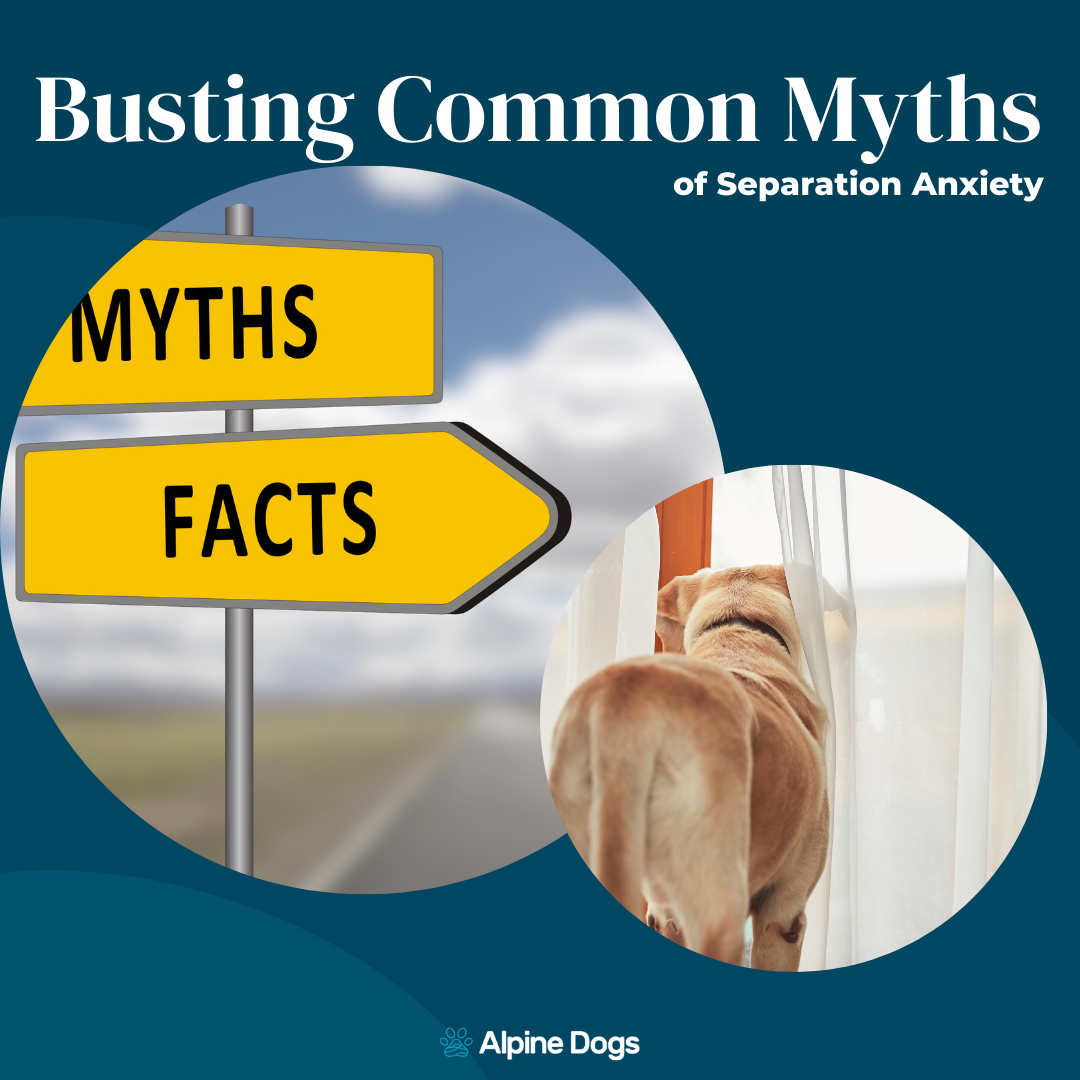For the sake of simplicity, the term separation anxiety is used by Saundra as an umbrella term to cover both clinical separation anxiety (where a dog is hyper-attached to one specific individual and panic sets in if they are away from that one individual) and isolation distress (a dog that panics if they are left alone, but are ok as long as a human is with them).
Both clinical separation anxiety and isolation distress are treated using systematic desensitization, and Saundra is qualified to help with both.
If your dog shows signs of distress when alone, that may include barking, howling, destruction, housetraining accidents, pacing or other signs of stress, you are in the right place. Saundra can help you!
There are many reasons why some dogs may be more prone to separation anxiety. Genetic predisposition, maternal stress during pregnancy, lack of exposure to alone time in early life, rehoming and big life changes/transitions are among them.
Separation anxiety is treated using systematic desensitization. This is a process where we slowly and systematically expose your dog to being alone in a way that doesn't elicit a fear response.
Sounds simple right?
If only it was. There are so many variables and nuances to this process, having a certified separation anxiety dog trainer like Saundra on your team can make all the difference.
Cookie cutter training plans like leaving for one minute, then five, then ten are not our approach. Saundra works with you and your individual dog on a daily basis with a fully customized training plan written for you to ensure we are making progress.
While I am confident in my training plans and have a proven track record of success, I cannot ethically make guarantees when it comes to separation anxiety. This is because like us, dogs are unique and do not all progress in the same way. Behavioural history, medical history and individual needs are just a few of the factors that influence how quickly a dog will progress, and how much progress they will make.
What I can guarantee is that I will be using my years of experience and expertise to guide the process for you, troubleshoot any issue that comes up and make sure we are setting your dog up to succeed as much as is within our control.
When you book a package with Alpine Dogs, you are guaranteed a spot in our intensive training program. This includes weekly live video assessments, daily check-ins and training plans customized to your dog and unlimited video review & email support.
In addition to the above, you are paying for a multi-credentialed separation anxiety trainer with years of specialized education and experience in this very issue.
While we would all love for separation anxiety to be resolved as quickly as possible, it takes time to make sustainable progress. In our experience, it can take anywhere from a few months to one year or longer for clients to reach their goals. When it comes to separation anxiety training, your dog sets the pace, and we typically see better long-term results from a more gradual and gentle approach.
In saying that, part of my role is to ensure we are being as efficient as possible with our training, and the intensive training program I offer allows for that as I’m watching your dog every step of the way.
Alpine Dogs does not use any aversive (scary, unpleasant or painful) dog training methods. While these methods may appear to fix problem behaviour short-term, there are well-documented side effects such as increased fear/anxiety and aggression associated with these methods. Dogs with separation anxiety are in distress and need patience and gradual exposure to the things that scare them, not a heavy hand.
If you’ve used punishment or corrective devices previously, know that there’s no judgment here. We’ll help you transition to more effective and proven techniques.
While crate training is often recommended for dogs with separation anxiety, we have not found that confinement is necessary or helpful for most dogs. That being said, all dogs are individuals and we can certainly discuss the use of a crate if your dog already has a positive association with one.
In-home training is not effective for separation anxiety, as we need to see your dog when they are truly home alone. Virtual training is the gold standard for this issue, and we have helped many clients with the use of Zoom and various camera systems such as Wyze.
Absolutely not! Spoil your dog all you want. There is no correlation between a dog who is “spoiled”, let on furniture or otherwise treated nicely and the development of separation anxiety.
In order to get started with training, you will need access to a computer, tablet or phone, a stable internet connection and a camera system to watch your dog when home alone. You will also need a plan to suspend absences (not leave your dog alone at all) between training sessions.
The goal of our training together is to teach your dog that being home alone is nothing to be worried about. If we are exposing them to home alone time beyond what they are comfortable with, your dog will continue to have bad experiences while home alone and this will make it difficult to progress with training.
